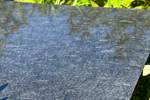PRF Composite Materials granted U.K. patent for Q.tool
Innovative prepreg tooling is highly drapable, capable of forming complex carbon fiber tooling shapes, in addition to reducing through thickness porosity and only requiring one debulk during layup.
Photo Credit: PRF Composite Materials
A year and a half after the launch of its Q.tool prepreg tooling technology, PRF Composite Materials (Poole, Dorset, U.K.) has been granted a U.K. patent for the product. The U.K. Intellectual Property Office issued the patent grant for the prepreg’s distinctive design. Offering a faster option for traditional 1:8:1 tooling, Q.tool is reported to offer benefits over the much critiqued 1:5:1 system, providing exceptional drapeability.
According to the company, Q.tool is unique in that it has considerably less enclosed free space — the volume within the fabric that is not filled with fiber — than conventional 2/2 twill prepregs. It is in these areas, which fill with the resin matrix, that air in the prepreg will migrate, causing pin holing in the surface and through thickness porosity. Heavier fiber tows result in increased crimp and therefore more enclosed space which requires a higher number of debulks to counter this. Q.tool, however, only requires one debulk in the entire layup process and reduces through thickness porosity. Furthermore, the prepreg fabric architecture produces a highly drapeable material — it will easily mold to complex shapes — that is easy to handle and lay up and, typically, provides a saving of 50% in layup time for a conventional 1:8:1 system.
Q.tool also offers an improved mold surface finish, reduces the amount of plastic and other vacuum bag consumables and ultimately increases reliability — the material’s patented design decreases the risk of errors in laying up, PRF says. These characteristics make it a sustainable solution for the manufacture of carbon fiber tooling.
Related Content
-
Hybrid composite architecture enables rigid wind propulsion solution for maritime decarbonization
GT Wings’ AirWing leverages aerospace engineering principles combined with hybrid glass and carbon fiber composite construction to deliver up to 30% fuel savings through compact, deck-compatible wind propulsion.
-
TCR Composites introduces TR1116 snap-cure epoxy prepreg resin system
Designed for press-cure applications, the resin system is highlighted for its snap-cure capability and tailored properties.
-
Carbon fiber, bionic design achieve peak performance in race-ready production vehicle
Porsche worked with Action Composites to design and manufacture an innovative carbon fiber safety cage option to lightweight one of its series race vehicles, built in a one-shot compression molding process.



